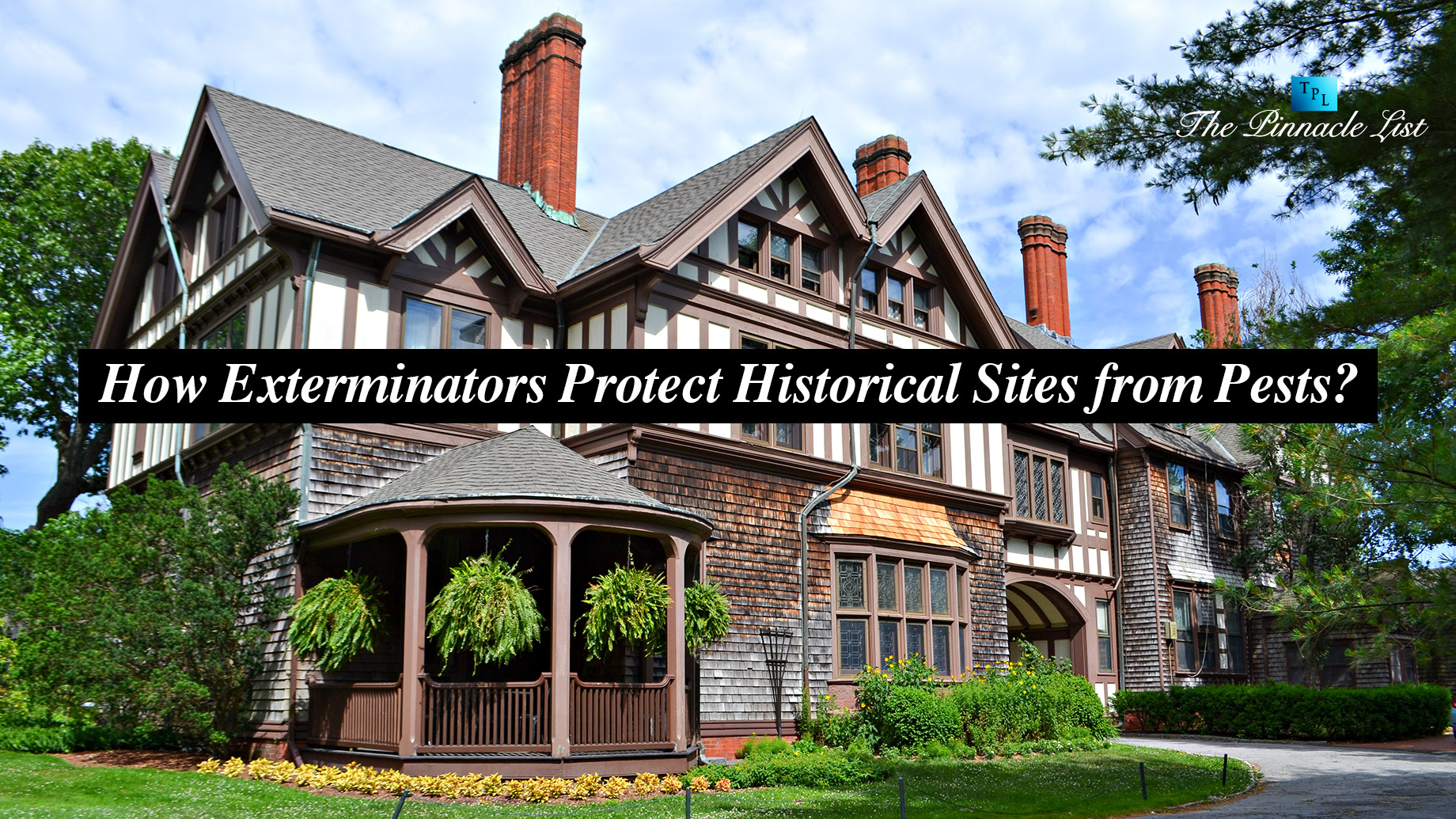
Preserving history is no small feat. From ancient ruins to grand estates, historical sites are more than just tourist attractions—they’re physical connections to the past, brimming with culture, art, and stories. But here’s the catch: these timeless treasures aren’t immune to modern problems. Pests. Yes, those tiny invaders with gnawing habits and insatiable appetites pose a colossal threat to historical landmarks around the globe.
Whether it’s termites feasting on centuries-old wood or rodents burrowing into architectural marvels, pests don’t discriminate. And that’s where Virginia Beach exterminators step in, armed with modern technology and a deep respect for heritage. Let’s uncover how these unsung heroes protect history from going up in smoke—or sawdust.
The Unique Challenges of Pest Control in Historical Sites
When it comes to historical landmarks, pest control is anything but straightforward. Here’s why:
- Fragile Materials: Many historical structures are built from materials like untreated wood, paper, and fabric—all prime targets for pests. Unlike modern buildings, these materials are irreplaceable.
- Strict Regulations: Preservation laws often limit the use of certain chemicals or invasive treatments, requiring exterminators to get creative with pest management.
- Hidden Vulnerabilities: Cracks in ancient walls or neglected attics can serve as secret gateways for pests, making thorough inspections crucial.
These challenges require a fine balance between eliminating pests and preserving history—a job exterminators are uniquely trained to handle.
Pests That Threaten Historical Sites
Before we dive into the solutions, let’s meet the culprits:
- Termites: These silent destroyers are infamous for chewing through wooden beams, floorboards, and furniture—sometimes for years before anyone notices.
- Rodents: Rats and mice not only gnaw through materials but also leave droppings that can spread disease and attract other pests.
- Carpet Beetles and Moths: These insects are notorious for feasting on antique rugs, tapestries, and clothing stored in historical archives.
- Birds: While picturesque, birds can cause significant damage with their droppings, which are acidic enough to corrode stone and metal.
- Cockroaches and Ants: These smaller pests can infiltrate any crevice, contaminating delicate artifacts with bacteria.
How Exterminators Safeguard Historical Treasures
Protecting a historical site requires a combination of cutting-edge techniques, attention to detail, and an understanding of the site’s cultural importance. Here’s how exterminator Virginia Beach work their magic:
1. Thorough Inspections
The first step in any pest control plan is understanding the extent of the problem. Exterminators use advanced tools like infrared cameras and moisture meters to detect hidden infestations without disturbing the structure.
For instance, a termite infestation in a colonial-era home can be identified through thermal imaging, pinpointing problem areas while preserving the integrity of the building.
2. Non-Invasive Treatments
Since chemical treatments can harm fragile materials, exterminators often opt for non-invasive methods, such as:
- Bait Systems: These discreet traps lure pests like termites and rodents away from the structure, eliminating colonies over time.
- Heat Treatments: High-temperature treatments can eradicate pests like moths and bedbugs without introducing chemicals.
- Cryogenic Freezing: For sensitive artifacts or furnishings, freezing pests at sub-zero temperatures is an effective and safe solution.
3. Structural Repairs
Exterminators often collaborate with preservationists to seal entry points, such as cracks, gaps, and holes, ensuring pests can’t return. These repairs are designed to blend seamlessly with the original architecture.
4. Preventive Measures
Prevention is key in protecting historical sites for future generations. Exterminators educate caretakers on practices like:
- Proper storage of artifacts to deter moths and beetles.
- Regular cleaning to eliminate food sources for pests.
- Installing bird spikes or netting to keep birds at bay.
Technology Meets Tradition
In the battle against pests, technology plays a crucial role in protecting historical sites:
- Electronic Monitoring: Devices like termite bait monitors and rodent traps send real-time alerts to exterminators, ensuring quick action when pests strike.
- Green Solutions: Many exterminators now use eco-friendly products, ensuring both the environment and historical artifacts remain unharmed.
- Drone Surveillance: For large sites like castles or cathedrals, drones can inspect rooftops and towers for signs of pest damage, minimizing the need for scaffolding.
These innovations allow exterminators to stay one step ahead of pests while preserving the integrity of historical landmarks.
Why Historical Preservation Matters
Historical sites aren’t just buildings—they’re legacies. Each brick, beam, and artifact tells a story about our collective past. Allowing pests to destroy these treasures is like erasing chapters from history books.
By investing in pest prevention and extermination services, we ensure that future generations can marvel at these wonders, just as we do today.
The Unsung Heroes of History
Exterminators might not wear capes, but their work in preserving historical sites is nothing short of heroic. With their expertise, technology, and respect for cultural heritage, they bridge the gap between the past and the present.
So, the next time you wander through a centuries-old estate or admire a historic painting, remember: behind the scenes, exterminators are working tirelessly to protect the stories that shape our world. History may not always repeat itself, but with the right care, it will always endure.